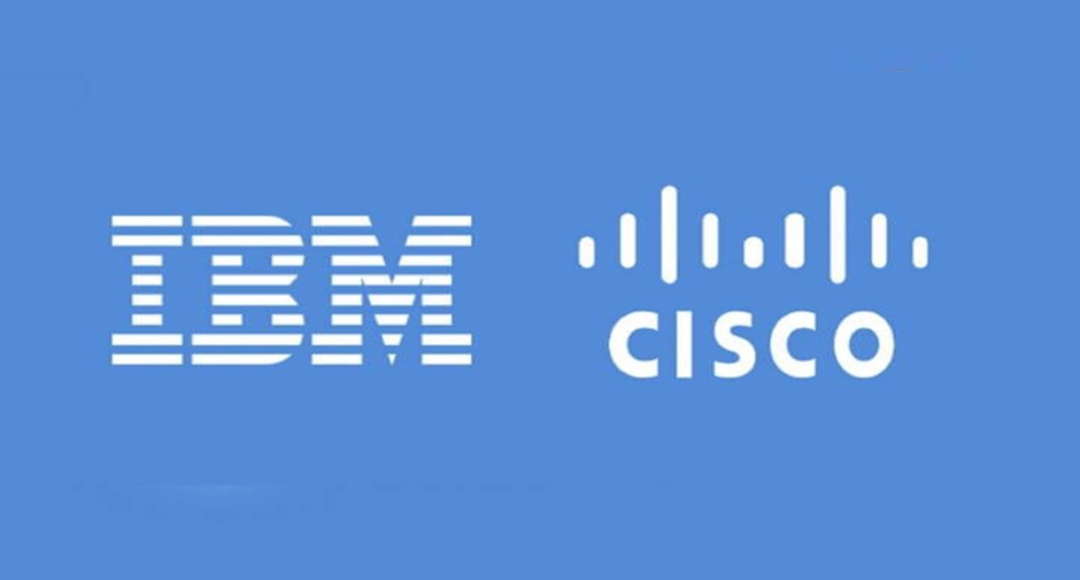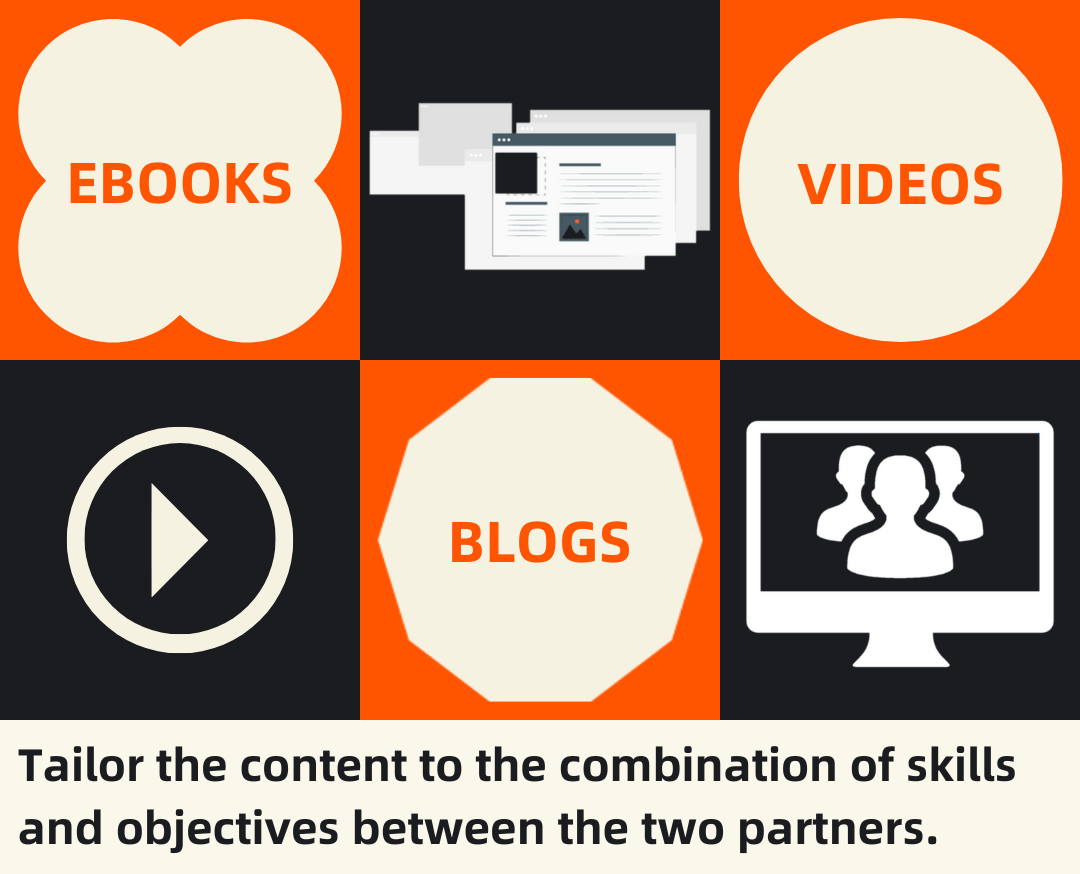“Two heads are better than one”, as the saying goes. Well, what about five or six?
Many companies find that the value, expertise and resources of two companies can combine to create something greater than the sum of its parts.
But this doesn’t mean that you need to become the hydra from the Greek mythos to attain success (though that would be a sight to see!). As we’ve found at Fifty Five and Five through initiating and working on B2B partnership marketing strategies, partnerships are another key to achieving success.
What is partnership marketing?

Partnership marketing (not to be confused with collaborative marketing) refers to when similar, like-minded companies create a long-term business relationship that benefits both parties. This usually takes the form of promoting each other’s products or services through joint promotion, co-branded products or other marketing initiatives.
One of the tastiest examples is the Cadbury’s Daim Bar. With the bar, two prominent chocolate giants came together to create a unique product, one that is the best of both worlds.
In the B2B world, a few examples include:
- Salesforce and IBM’s cross promotion partnership. IBM sells Salesforce products to customers, while Salesforce promotes IBM's Watson AI technology to their customers too.
- Hubspot and LinkedIn teaming up to create a series of guides for how to market on LinkedIn. Hubspot and LinkedIn’s content is valuable for marketers looking to leverage LinkedIn for their business.
- IBM and Cisco collaborating on the annual Cisco Live conference. It showcases Cisco’s products, with IBM providing speakers and contents related to its innovative solutions.
Is it actually effective?
If you choose marketing partners carefully and navigate the complications, partnership marketing strategies can be very effective.
Some of the main benefits include:
- Ability to reach your partner’s audience
- Taking advantage of pre-existing audience reputation from your new partner
- Essentially free marketing from your partner
- Greater online presence (backlinks and SEO)
Today, marketing is a combination of thought leadership, lead generation, measurable SEO, analytics and much more. Partnering up with like-minded companies is a great way to get better results from your marketing strategy.
Perfect your partnership marketing strategies in 7 steps
To succeed, implement the following:
1. Connect with potential business partners at events
The first step to creating an effective strategy is to get yourself out there and connect with like-minded businesses. The obvious way to do this is to get on social media sites like LinkedIn and connect with people across your industry or sector. While there’s certainly some benefit here, there’s nothing quite like networking in person to work out if you and your potential partners really click.
If you’re a Microsoft Partner, there’s plenty of conferences and networking events throughout the year, with the Inspire conference being the main calendar date. But there are also a range of smaller conferences and meetings running through the year.
2. Decide if the partnership makes sense
Choosing the right partner for your business is perhaps the most important part of the whole process. If this goes well, the other parts of your plan slot seamlessly into place. If not, you’ll risk wasting time and money on a project that won’t get off the ground. Before you decide to go ahead with a partnership marketing strategy, there’s some important questions you should ask yourself.
The first and most obvious barrier is whether you and another potential partner have shared values that can be the base on which your partnership can stand. Values that can ease any possible friction in a business relationship. If both of you have a shared passion for technology benefiting and transforming society for the better, then that’s a good foundation to build from.
Case study: Bizagi and Blue Prism
We got involved in Bizagi and Blue Prism’s collaborative efforts through Microsoft. The two process automation specialists recognised they would make great partners by combining their Robotic Process Automation (RPA) and Digital Process Automation (DPA) tools via Microsoft Azure, to deliver an exceptional product.
By the time Microsoft asked us to iron out the value prop to make the collaboration work, Bizagi and Blue Prism knew that their common values and innovative process automation tools would be ideal bedfellows.
You should also consider what the other company brings to the table from a more practical viewpoint. Is their reputation strong enough that your business will benefit from the association? Can they bring skills and expertise to the table that you will benefit from – or are they offering resources you already have in-house?
After that, consider whether they have a similar enough audience that a combined effort would make sense? Would a partnership marketing effort actually create more tangible leads for your business than your normal efforts?
If your answer to all of these is positive, then you’re on the right path.
3. Define roles and expectations
Once you’ve found the right partner, you need to define clear roles and expectations for what you aim to achieve.
This involves discussing timeframes, costs and responsibilities. It’s important to clearly define early on who’s responsible for what aspects of the project, to reduce any risk of complication further down the line. The last thing you want to do is have an argument halfway through the project about who was supposed to complete a particular task or contribute certain funds.
It’s also a good idea at this point to clearly define what the project is intended to achieve for both parties. All collaborations require a little give and take – and both sides should be fully aware of the other’s objectives when they’re working on the project.
Case study: TCS and London Marathon Events
We’re a long-time partner of TCS, and are no stranger to the busy atmosphere when the London Marathon is on.
As the title sponsor of the London Marathon, TCS has a big role to play in the how the event runs, helping London Marathon organisers implement technology into the event running their event campaign and more.
We are partners in the collaboration, and understand our own role in delivering engaging social content for TCS that grows their channel, but also highlights the magnitude and emotions that London Marathon Events would like to demonstrate with every post.
4. Develop an appropriate partnership marketing idea with your partner

Then it’s time to flesh out the plan in more detail and create a more tangible content strategy. At this point, you should consider the shared objectives and choose the type of marketing that best suits the compromise. This could include any of the following:
- eBooks
- Blog posts
- Co-sponsored whitepapers
- Videos
- Webinars
- Research projects
Each of these forms of content will achieve a slightly different thing, and it’s important to tailor the content to the combination of skills and objectives between the two partners.
Case study: TCS and London Marathon Events (Cont'd)
Before the London Marathon takes place, a core theme is selected and utilised across materials before, during and after the big day. The event is on a monumental scale. Tying all elements together needs something strong and bold that TCS and the London Marathon can agree on.
‘Building on Belief’ was the brand message that was selected for TCS resources like materials, videos, website pages, social posts and more. Characters that embodied parts of the messaging were designed and placed in videos and other contents.
Once Fifty Five and Five got involved, we assisted in bringing these ideas to life – pitching ways their characters could work on a variety of campaigns. #Buildingonbelief became the hashtag used on our TCS content at the event.
5. Know your audience
Knowing yours and your partner’s audience is a key part of creating content that ticks both your boxes. Two businesses’ audiences are rarely exactly the same, and it’s important that a compromise is found.
Writing for one audience can be difficult enough without having to negotiate the requirements of another entirely – so it’s important that you think carefully about how the two fit together. One of the most effective ways of doing this is to create and share marketing personas.
A persona creates a fictional character that’s the personification of your average potential lead or client. It runs through their company, situation and job role, outlining why they’re interested in your product and what reasons may or may not convince them to purchase. By sharing your personas with each other, you can make sure your marketing material are properly aimed towards the ideal audience.
Case study: Bizagi and Blue Prism (Cont'd)
Process automation can relieve bottlenecks in many industries. Bizagi and Blue Prism know this. From logistics, to HR, sales, marketing and beyond, every process has the potential to be released from stagnation.
At Fifty Five and Five, we have worked with various process automation tool providers before, and possess a deep knowledge of B2B marketing. We understood the audience that Bizagi and Blue Prism were trying to reach out to, and the problems that their prospective buyers face. We constructed personas and audience snapshots. These targeted a range of c-level roles, the pain points faced and why they would be interested in Bizagi and Blue Prism.
6. Run local targeted events
With two companies, you have twice the resources, twice as much money to push your content out there and twice the number of clients/partners that would be interested in it. In short, there’s more scope for you to generate some noise and excitement about your collaboration.
It could be a good idea to organise an event or launch to get people together and promote your work. That could involve bringing together speakers from around the country or even internationally and inviting your partners, clients and potential customers. This gives you the opportunity to split the planning, logistics and cost of the event with your partner and stir some real interest among people within your respective networks.
7. Post guest blogs
Guest blogging is when you organise with another party to have your content posted on their site. This can expose your brand to a different audience, increase your traffic to both parties’ blogs, boost your brand’s authority, build relationships in the field, and provide your own blog with fresh content from guest bloggers.
The other value of this is it allows you to generate backlinks, which provide valuable SEO benefits for both sides. If you and your partner agree to guest blog on each other’s websites, you both get a free backlink and a free post – which sounds like a pretty good deal for both parties.
In fact, 11% of marketers say that “partnership posts” can be their brand’s most engaging content – especially on social media.
Discovery your solution
Looking for the perfect partner to help you boost your success? Explore our range of services tailored to meet your unique needs!

